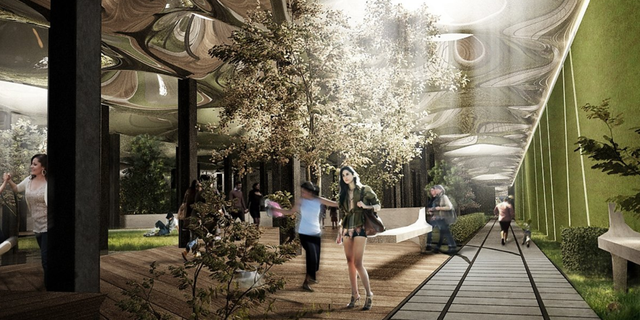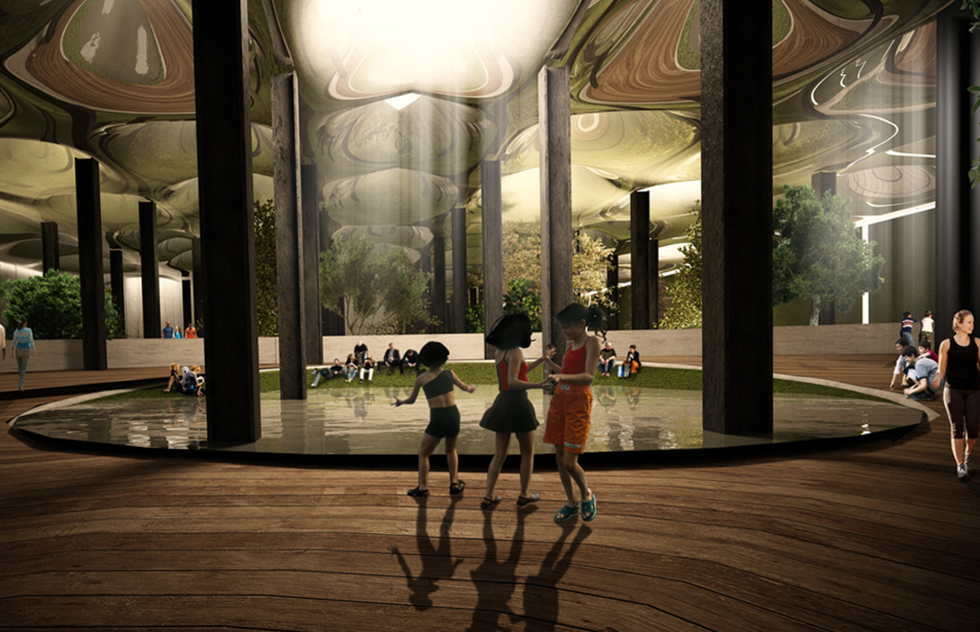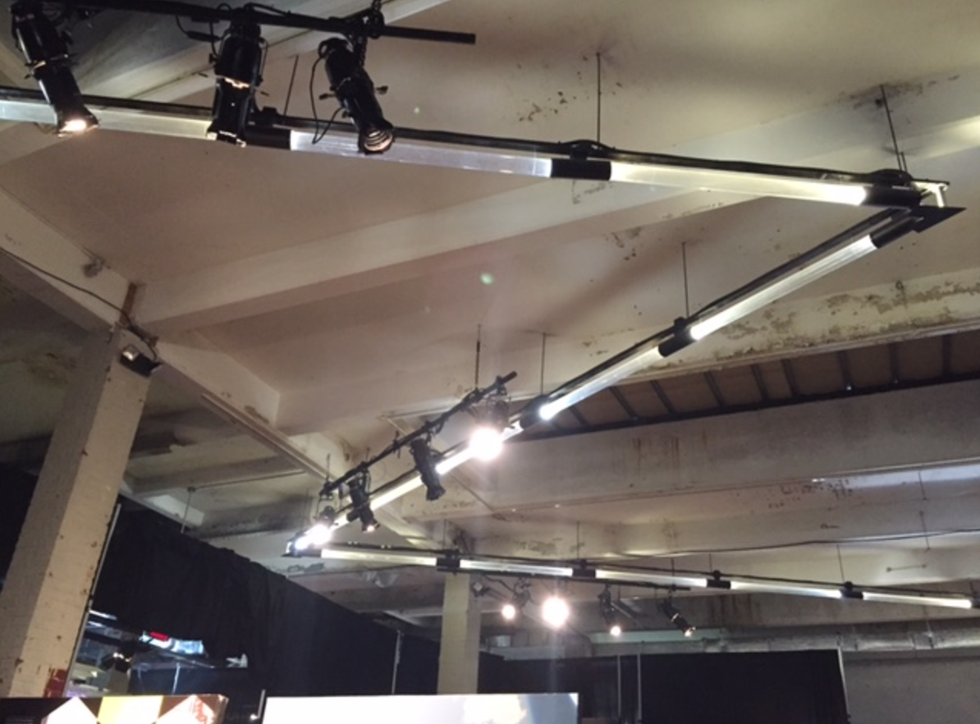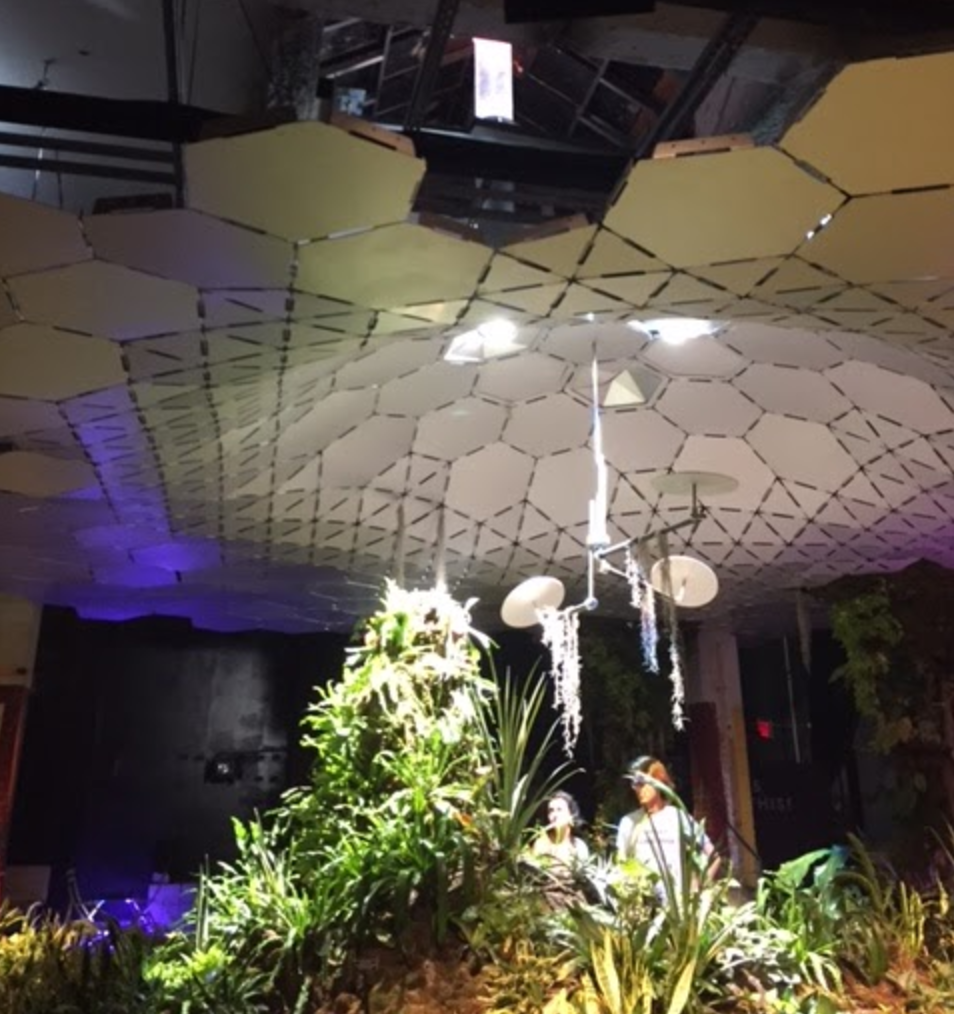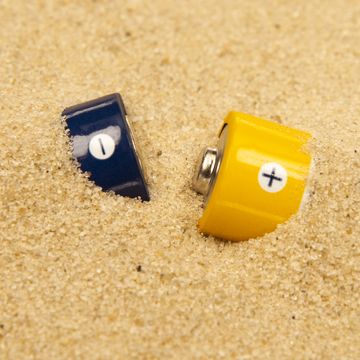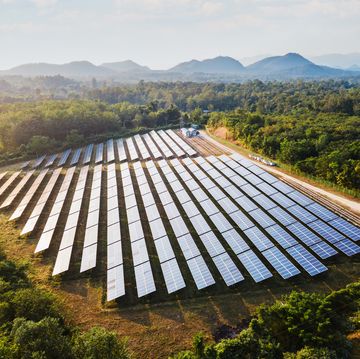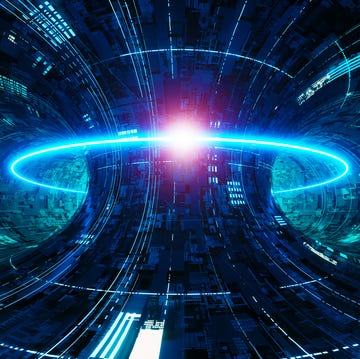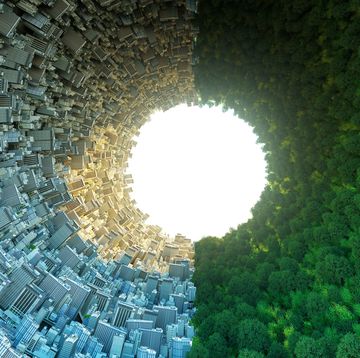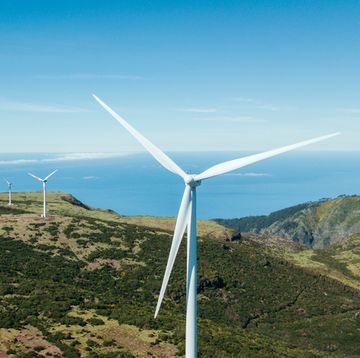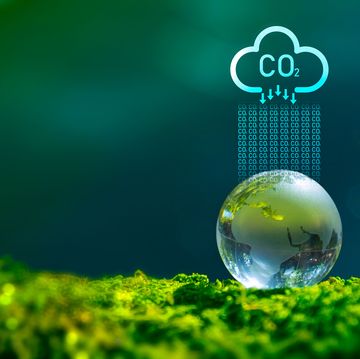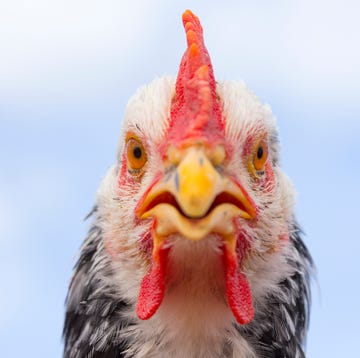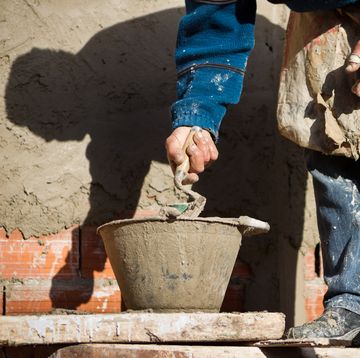In July, the New York City Economic Development Corporation (NYCEDC) approved the development of the Lowline, soon to be the world's first underground park. In a few years you'll be able to walk into an abandoned Manhattan trolley tunnel filled with exotic flora from around the world, all sustained by natural sunlight channeled into the cavern by an intricate arrangement of solar collectors, mirrors, and a transparent tube system.
Conceived by James Ramsey and Dan Barasch, the Lowline collects light at street level by using a system of mirrors—similar to concentrated solar power mirrors—that pivot and rotate to follow the sun's journey across the sky. Once complete, the Lowline will be sourced by more than 100 of these collectors—large parabolic dishes that concentrate sunlight into beams 30 times the strength of the light experienced by pedestrians on the street.
The beams of light are then funneled between a series of mirrors, which are protected inside clear tubes to prevent dust from entering the light "irrigation" system. What resembles extra-large zig-zagging florescent lights on the ceiling are actually super-concentrated photon beams channelled from the outside world.
The light is then sent to distributors—optical diffusers mounted to the ceiling made of anodized aluminum panels. These spread the light over the greenery of the park. The panels are structured in a geodesic pattern to illuminate a large space.
The NYCEDC decided to green-light the project after seeing the technology demonstrated at the Lowline Lab, an above-ground proof-of-concept in Manhattan that's currently open to the public. The mirror-and-tube system beams external sunlight indoors, creating an environment that fosters natural plant growth.
Thanks to this unique system of mirrors and distributors, the engineers have managed to produce a full-spectrum light efficiency of about 70 percent (losing only small amounts of light that are absorbed instead of reflected at each mirror touchpoint), allowing for authentic plant life to flourish underground. Compare this to a hypothetical alternative of collecting energy from solar panels and using that electricity to power LED lights, which would create efficiencies closer to 7 percent.
The Lowline can be seen as a subterranean, high-tech cousin of Manhattan's wildly successful High Line—the acclaimed project that transformed an abandoned elevated train track on the west side of Manhattan into a pedestrian walkway, opening up 1.4 square miles of public space—an area larger than Central Park.
Something different about the design of the subterranean Lowline is that the park will be able to sustain a myriad of plants from exotic destinations. According to spokesperson Robyn Shapiro, the Lab is currently home to around 100 different varieties of plants, including edible flora such as herbs, pineapples, strawberries, and lemon trees. The semi-tropical plants were carefully selected based on the underground temperatures and humidity levels. The up-front investment in creating the Lowline is expected to be $60 million, which includes funds to retrofit the abandoned terminal and install the custom light-directing equipment.
Still, the designers face a few challenges in bringing the lab to full-scale realization. As it currently occupies an area that is only 5 percent of the eventual 1,200-square-foot park, scaling up means designers need to work hand-in-hand with planners and community groups to incorporate the more than 100 rotating collectors around the streets of the Manhattan, a tall order. They also need to perfect the underground sunlight distribution systems if they're going to substantiate the claim of being entirely sourced from full-spectrum Manhattan sunlight. (In the current model, the Lowline Lab is supplemented with the purple glow of LED lights similar to those featured in vertical farms.)
When the Lowline opens in 2021, the former Williamsburg Bridge Trolley Terminal will have become a 1,200-square-foot green space. If the project backers do pull it off, their success could provide the framework for other cities to build their own subterranean parks. Beyond a lush, green area for the public to enjoy year-round, and underground park also could become a source of exotic crops for highly populated cities.
New York City is famous for building up toward the sky. Now New Yorkers are going to tap the subterranean caverns below by bringing the sunlight with them.
